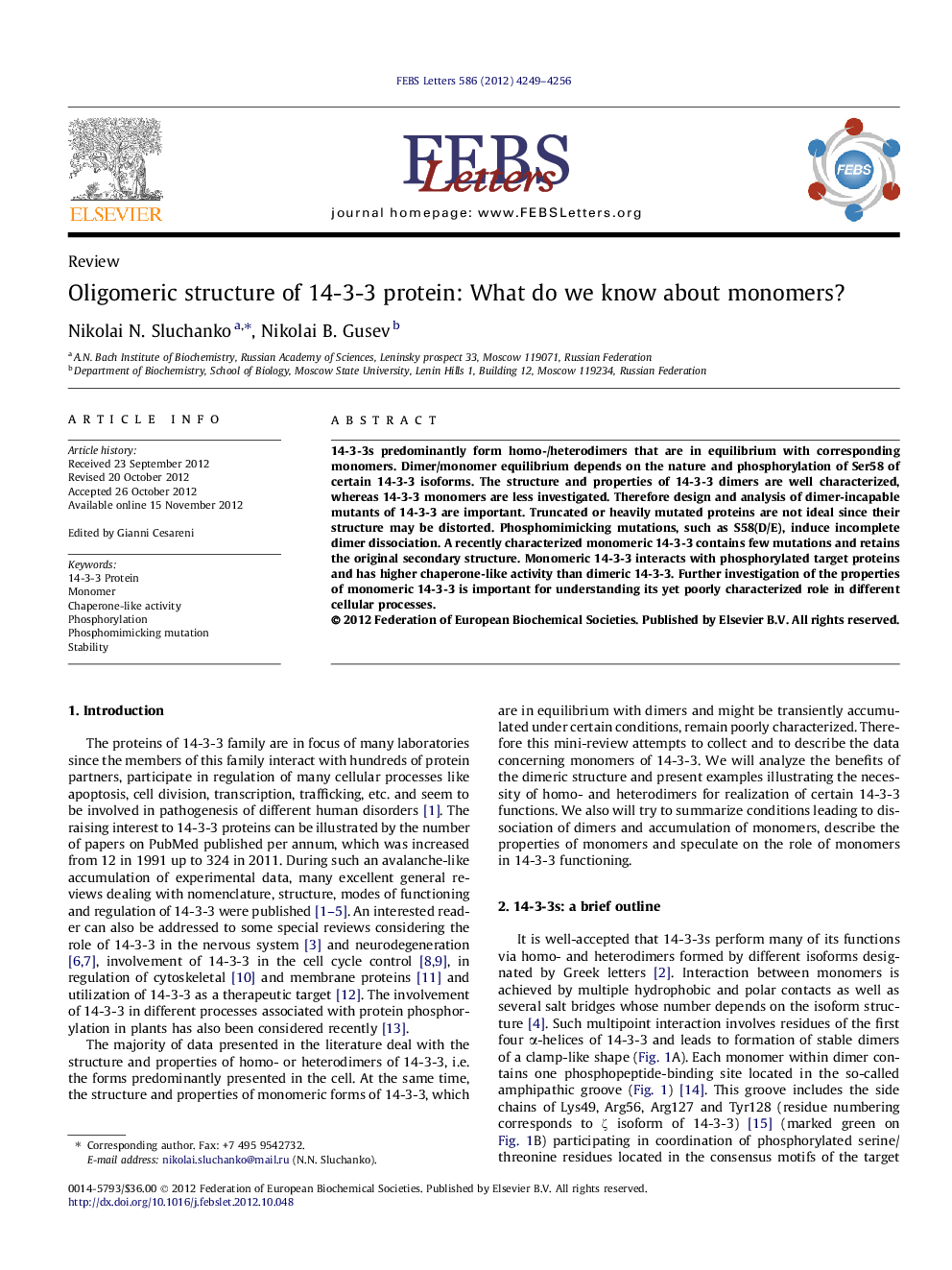| Article ID | Journal | Published Year | Pages | File Type |
|---|---|---|---|---|
| 10871222 | FEBS Letters | 2012 | 8 Pages |
Abstract
14-3-3s predominantly form homo-/heterodimers that are in equilibrium with corresponding monomers. Dimer/monomer equilibrium depends on the nature and phosphorylation of Ser58 of certain 14-3-3 isoforms. The structure and properties of 14-3-3 dimers are well characterized, whereas 14-3-3 monomers are less investigated. Therefore design and analysis of dimer-incapable mutants of 14-3-3 are important. Truncated or heavily mutated proteins are not ideal since their structure may be distorted. Phosphomimicking mutations, such as S58(D/E), induce incomplete dimer dissociation. A recently characterized monomeric 14-3-3 contains few mutations and retains the original secondary structure. Monomeric 14-3-3 interacts with phosphorylated target proteins and has higher chaperone-like activity than dimeric 14-3-3. Further investigation of the properties of monomeric 14-3-3 is important for understanding its yet poorly characterized role in different cellular processes.
Related Topics
Life Sciences
Agricultural and Biological Sciences
Plant Science
Authors
Nikolai N. Sluchanko, Nikolai B. Gusev,
